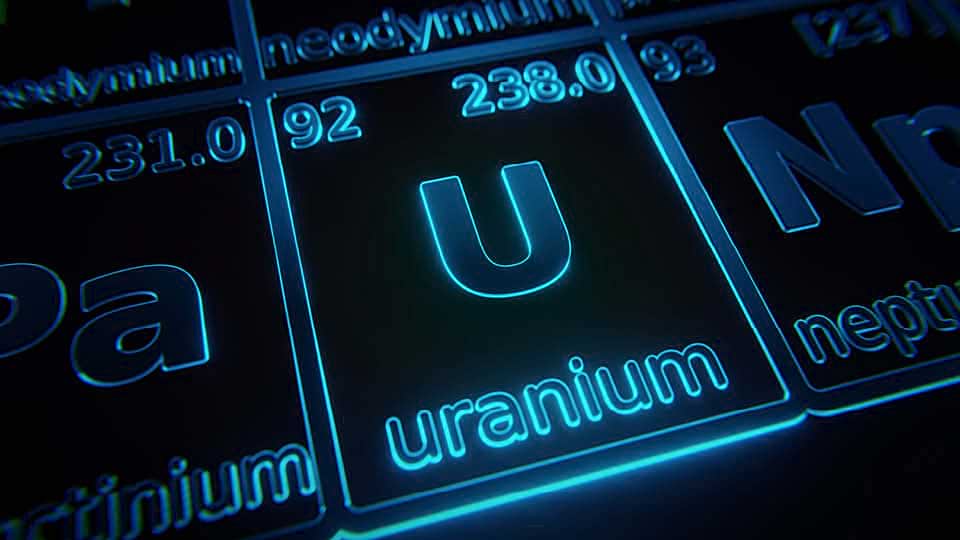Three Forces Powering the Nuclear Energy Surge
24 September 2024
Tiempo de Lectura 3 MIN
Nuclear energy is back in the spotlight after years in the shadows, subject to debate over its long-term viability and whether its potential benefits (reliable, clean energy) outweigh its inherent risks (safety perceptions, security concerns, environmental impact). In recent years, it has become clear that nuclear energy will be an important contributor to meeting global power demand moving forward.
Three key forces are currently powering the investment case for the nuclear energy ecosystem:
1. Increasing Electricity Demand: The International Energy Agency1 projects that global demand for electricity will increase rapidly through 2025 and beyond, led by emerging economies such as China and India and powered by several trends including:
- Artificial Intelligence: Advances in artificial intelligence and other data-heavy technologies are rapidly increasing the need for data centers and their associated power consumption.
- Electric Vehicles: Electric vehicle ownership is on the rise, along with a range of battery-powered machinery, all requiring electricity for charging.
- Cryptocurrency: The continued adoption of digital assets is adding to the world’s growing power demand.
- Climate/Heatwaves: Intense heatwaves in many regions have contributed to this elevated electricity demand, straining local power grids.
Increasing Data Center Power Demand with Decreasing Efficiency Gains
Source: Goldman Sachs; April 2024. For illustrative purposes only.
2. Reliable, Clean Energy Source: Global efforts to reduce greenhouse gas emissions by building out renewable energy capacity have, by many accounts, fallen behind schedule. This has raised the profile of existing nuclear facilities and new construction as important components of the global energy transition.
Nuclear energy has notably lower emissions compared to some renewable energy sources and there are no limits on when nuclear facilities can generate power. Unlike wind and solar energy, which face the hurdles of calm winds and dark skies, nuclear energy can provide consistent and reliable power.
Nuclear Emits Less During Life Cycle Than Many Renewable Energies2
Source: World Nuclear Association, Intergovernmental Panel on Climate Change. For illustrative purposes only.
3. Increased Regulatory Support3: An important tailwind for nuclear energy is the renewed support from many governments. Following the Fukushima nuclear accident in 2011, many countries deprioritized nuclear energy in favor of other sources. However, in recent years, many have reversed their stance or affirmed their commitment, recognizing the critical importance of nuclear energy in the power mix:
- United States: The US has reversed course by choosing to extend the life of several nuclear power plants that were set to be decommissioned. Recently, the US Nuclear Regulatory Commission renewed the operating licenses at the North Anna Power Plant in Virginia, extending their operating lifetime by 20 years to nearly 2060. This trend is evident in many regions of the US.
- Japan: Despite Fukushima being fresh in their collective memory, Japanese leaders have begun taking steps toward expanding nuclear capacity. In late August, Prime Minister Fumio Kishida announced plans to hold a ministerial meeting to discuss measures needed to restart existing reactors at a Tokyo Electric Power Company facility.
- China: China has made significant, strategic investments in nuclear fusion. By some estimates, the Chinese government is spending around $1.5 billion annually on fusion research, nearly twice that of the US.
- Switzerland: The Swiss Federal Council is set to reverse a 2017 voter-approved ban on the new construction of nuclear power plants.
- India: India’s Department of Atomic Energy currently plans to deploy 50 small modular reactors in the country. They hope to create versions that can easily be deployed in older, non-nuclear power plants.
- Norway: Norway has entered into a memorandum of understanding with South Korea’s DL Energy and DL E&C to explore the construction of a nuclear power plant at one of the country’s oil refineries.
Invest in in the Entire Nuclear Ecosystem
The VanEck Uranium and Nuclear ETF offers investors comprehensive exposure to the nuclear energy ecosystem. In addition to uranium miners, the strategy’s targets nuclear energy producers, companies involved in construction, engineering and maintenance of nuclear projects, and those companies providing equipment, technology and/or services to the nuclear power industry.
Related Insights
DEFINICIONES Y DIVULGACIONES IMPORTANTES
Este material solo puede utilizarse fuera de los Estados Unidos.
Esto no es una oferta de compra o venta, ni una recomendación de ninguna oferta de compra o venta de ninguno de los valores mencionados. Las tenencias del Fondo variarán. Para ver una lista completa de las tenencias de VanEck Mutual Funds y los ETF de VanEck, visite nuestro sitio web www.vaneck.com.
La información presentada no implica la prestación de asesoramiento personalizado de inversión, financiero, legal o fiscal. Algunas de las afirmaciones contenidas en este documento pueden constituir proyecciones, previsiones y otras declaraciones prospectivas, pero no reflejan resultados reales. La información provista por fuentes de terceros se considera fiable, no ha sido verificada de forma independiente para comprobar su exactitud o integridad y no puede garantizarse. Todas las opiniones, proyecciones, previsiones y declaraciones prospectivas presentadas en este documento son válidas a la fecha de esta comunicación y están sujetas a cambios sin previo aviso. La información aquí contenida representa la opinión del autor o autores, pero no necesariamente la de VanEck.
Las opiniones incluidas en este documento no deben tomarse como consejos o recomendaciones para comprar o vender ninguna inversión en ninguna jurisdicción y tampoco constituyen un compromiso por parte de Van Eck Associates Corporation o sus subsidiarias de participar en ninguna transacción con ninguna de las empresas mencionadas en este documento. Este contenido se publica en Estados Unidos. Los inversores están sujetos a los valores y las regulaciones impositivas de sus jurisdicciones correspondientes que no se mencionen en este documento.
Toda inversión está sujeta a riesgos, incluida la posible pérdida del dinero invertido. Como ocurre con cualquier estrategia de inversión, no hay garantía de que se cumplan los objetivos de inversión y los inversores pueden perder dinero. La diversificación no asegura un beneficio ni protege contra una posible pérdida en un mercado en declive. El rendimiento previo no garantiza resultados futuros.
1 Electricity Mid-Year Update; IEA; July 2024.
2 Carbon Dioxide Emissions from Electricity; World Nuclear Association; September 2024.
3 Global Nuclear News – 4w August; CLSA; September 2024.
Related Insights
06 noviembre 2024
14 octubre 2024
09 octubre 2024

